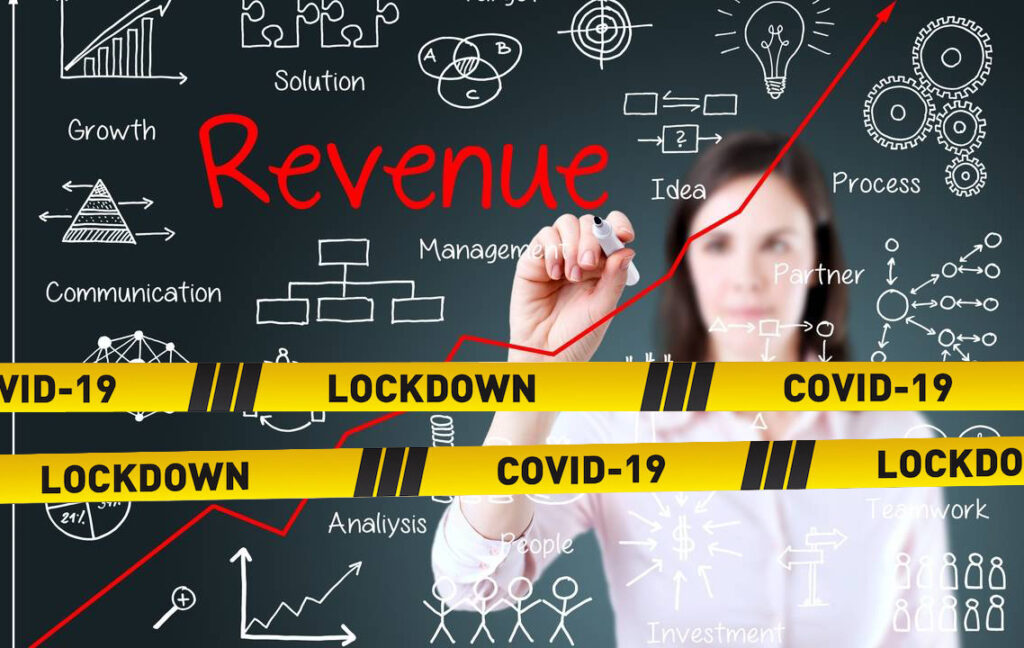COVID Task Force 2: Revenue Management Under Lockdown
The travel and tourism industries are some of the most heavily impacted businesses by the current pandemic. And the impact of COVID-19 on the airline industry is unanimously negative. Airlines around the world have canceled 60%—90% of their flights, which could cost the industry a total of $250B. Unlike previous economic downturns, it is unclear when and how businesses will return to normal after the lockdown. This is the harsh reality of the current economic condition.
Since most airlines are already operating under a very thin margin due to the high fixed cost of the airline business, airlines typically have only a few months of cash reserves. Although the reduction of oil prices has provided airlines with some cost-saving in jet fuels, many of them also have to pay extra to park their planes. To keep the business afloat under extensive travel bans, airlines must adopt strategies to preserve cash. These include reducing work hours for employees and cutting the costly long haul flights. Some airlines are shifting their excess capacity to fill the increased demand in cargo, and also to domestic routes where travel restrictions aren’t as stringent.
To incentivize booking, many airlines are offering flexible cancellation rules on top of deep discounts. In addition to the reduced capacity due to canceled flights, the virtual capacity of the remaining flights is further limited to allow for more distance between passengers. These actions further squeeze the airlines’ margin. In such dire time, it’s even more essential to have robust revenue management (RM) practice to protect your margin. While the airlines are reducing their capacities, what can pricing analysts and revenue managers do to ensure their RM system is functioning properly?
How Quickly Should an Algorithm Learn?
Since PROS is a premium RM solution provider for major airlines around the globe, we are privileged to have continued our service to the airline industry for 35+ years. At a high level, RM systems consist of 2 components operating in successive stages. First, the predictive component will forecast future demand for a product or service; and subsequently, the optimization component will guide the setting of its price to maximizes the total revenue growth. The COVID-19 pandemic poses a challenge for the predictive component (i.e. the forecaster), because all forecasting relies on historical data to forecast future demands. However, since there is no precedent to COVID-19, history is no longer a reliable predictor of the future.
Our forecaster uses Bayesian inference, so it’s able to learn and adapt. Therefore, even if we do nothing, the forecaster would be able to adapt to the current market conditions. How fast the forecaster learns depends on the drift parameters determined from the airline’s data. Although these settings are customer-specific, the learning rate is generally between 8—16 weeks. We can increase the drift to make learning faster and adapt more quickly to the current bookings. Although this might seem beneficial now, it will depress future demand forecast because the currently reduced level of bookings will also be used to determine the seasonality component for next year.
If the COVID-19 pandemic is shortlived (i.e. lasting no more than a few weeks) then this wouldn’t be a big problem because we can simply treat it as noisy outliers. Our forecaster is versatile and offers several different ways to handle outliers. One method that leverages drift adjustment is to reduce the drift sufficiently so the forecaster won’t adapt fast enough to the transient demand drop. This will keep the short term forecast stable. Although the shape of the seasonality will be altered by this uncharacteristic booking data under the lockdown, if the lockdown is short, it’s feasible to apply manual influences to the impacted period next year.
However, since COVID-19 is not going away anytime soon, the slower learning rate won’t help. Moreover, since the lockdown is lengthy, applying manual influence over an extended period creates much unnecessary work. Although drift adjustment won’t help us now, it may be helpful after the lockdown is lifted when new booking data is arriving more steadily.

“Social Distancing” the Booking Data Under Lockdown
The conundrum we face is that we need the current booking data to help the forecaster adapt in the near term, but we don’t want these data to impact the long-term forecast which is driven predominantly by seasonality. Since the booking data under the lockdown does not represent the true seasonality of the demand, we need a way to keep them in isolation so they won’t alter the shape of the seasonality.
Although our forecaster leverages history to make forecasts, it doesn’t store the huge volume of raw historical data which degrades performance. Instead, it will build a model that summarizes the entire history first, then it will commit this historical summary to storage after a window (typically 7 days). This summary is captured and stored efficiently as a set of parameter states.
Our forecaster offers 2 mechanisms to suppress the daily update of the parameter states that summarize history. We only need to specify the date range and the affected origin-destination (O&D) plus the point of sales (POS) before the parameter states are committed for storage.
- Holiday and Special Event (HSE):
The booking data under the HSE definition is automatically excluded in the update of historical seasonality (i.e. the historical parameter states). This can be configured directly in the UI. However, the HSE configurator automatically checks for overlaps and does not allow for multiple HSE for the same O&D/POS. Since the COVID-19 lockdown is quite extensive, it will likely overlap some pre-configured HSE. Therefore, unless we remove all previously-defined HSE, this is not the most efficient method to segregate the booking data under lockdown. - Censoring:
This is accomplished via an external XML file that specifies the spatiotemporal span of the booking data to be censored. Since censoring does not check for overlaps, this method is a lot simpler as the airlines just need to keep this XML safe in case a forecaster restart is needed at a later time.
Although both methods can isolate the booking data under the influence of COVID-19, censoring is our primary recommendation to all airlines as it’s the simplest.
What if you missed the golden window and the parameter states are already written into history? Censoring (or applying HSE) in the past would require rewriting history. This is achievable for a few important O&D/POS by executing a smart-start of the forecaster. The alternative is restarting the forecaster entirely, which includes a lengthy warm-up process to regenerate all the historical summaries (i.e. the parameter states). Since no forecasting is ever perfect (i.e. with 100% accuracy), it might be more practical to just start censoring now and accept some uncharacteristic booking data.
Beyond Airline Demand Forecasting
Demand forecasting and price optimization is a problem that every business should master in this hyper-competitive market where margin is constantly being squeezed. However, the practice of RM in most other industries isn’t nearly as matured as the airlines. So we have simpler RM-like systems designed for our B2B customers with their corresponding forecaster.
Unlike the airline forecaster, these B2B forecaster stores all the historical raw data rather than the parameter states that summarize it. Although the B2B forecaster lacks certain advanced features required by the airlines, it does have an advantage in addressing our data “social distancing” conundrum. It is much faster to restart the B2B forecaster, because there is no need to re-estimate all the parameter states, since all the historical data is readily accessible. Another difference is that our B2B forecaster does not check for overlapping HSE.
As a result, our car rental customers have successfully defined a 1-week-long HSE to isolate their data under lockdown. This enabled the B2B forecaster to accurately estimate the near term demand without the need to manually influence the demand. Since this holiday definition can be re-applied, we can simply repeat it week after week until the lockdown is lifted and reservations resume for a region. Moreover, because car rental customers restart their forecaster nightly, it doesn’t hurt to try it. If this method doesn’t work well and still results in many manual influences, then they can simply remove the HSE and restart forecaster with no harm done.
It may be worth mentioning that PROS is already building a highly configurable and scalable forecasting service on the Cloud. Although this is still under R&D, since forecasting is such an integral part of the PROS platform, it makes sense to abstract this functionality and make it accessible to all PROS solutions.
Although we’ve focused primarily on the demand forecasting component of RM, we know from basic economics that proper pricing must consider both supply and demand. Therefore, it’s equally important to examine the optimization component of our RM that produces a bid price after taking into consideration the airline’s capacity (i.e. the “supply”). This bid price represents the marginal opportunity cost of a seat, given the current capacity and forecasted demand. In practice, it serves as a control mechanism that opens up only those fare classes above the bid price for sale. In essence, this allows airlines to change the price of their static pre-published fares by dynamically offering different fare classes as the seats are being booked. The current pandemic is forcing airlines to reduce their capacity, effectively decreases the “supply” of seats to match the demand drop. However, airlines must ramp up their capacity as the economy reopens. And we are uniquely positioned to help the airlines in this next chapter of our history.
The Future of Travel
At PROS, we are proud to have pioneered our airline RM solution 35+ years ago. Ever since then, we’ve partnered with global airlines through the boom and the bust. COVID-19 is no different. Our teams have already hosted numerous workshops (accessible by our customers) participated by airlines from 6 continents to discuss options for mitigating the effect of COVID-19 on booking data and maintaining data integrity.
In 2001, the 9/11 attack in NY changed travel forever. Airport security became more stringent, with greater restrictions on carry-on items and a more thorough security check that uses technologies like the full-body scanners. This made travel safer. Likewise, COVID-19 will forever change travel again. We can expect improved hygiene, more comprehensive health screening, a greater focus on cleanliness that uses robotic sterilization, and even redesigned seating that enables extra social distance. Air travel will be more hygienic than ever.
Although airlines will incur significant losses in the short term, we’ve seen from past crises (e.g. 9/11, the SARS outbreak, the Icelandic volcano eruption, etc.) that this industry is very resilient. It will take time, and in some cases, government assistance, but travel will return. People will want to go out and see the world again, however different this experience may be, especially after the pandemic. And PROS will always be here to help you, every step along the way. You can count on us.
In the meantime, you can also help us help you by participating in our analysis. We are happy to annouce that we already have 6 airlines and 2 B2B customers participating at the time of publishing of this blog. If you are interested, please reach out to your respective CSM to discuss how you can participate and contribute to the recovery of your respective industry.
In case you missed it, previous installments of this mini-series are accessible here:

